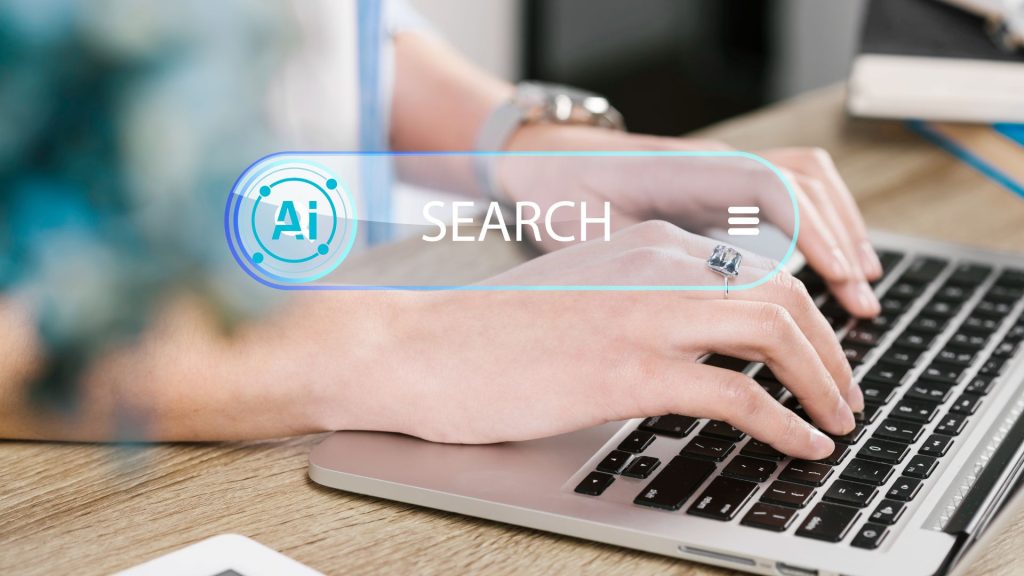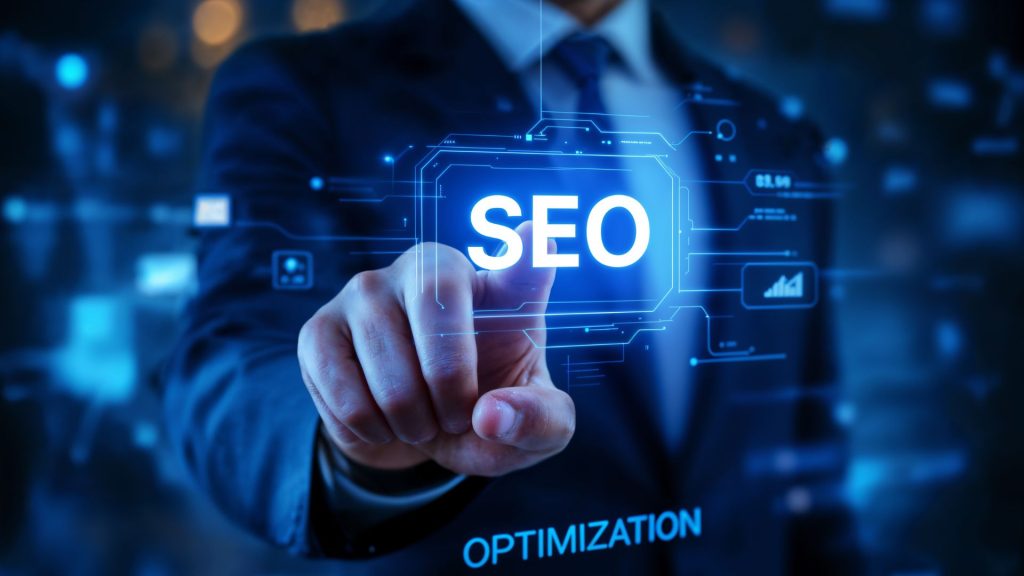Most Popular Blogs

Nov 2025
The ROI of Hiring an Agency vs In-House for SaaS Startups (Data-driven Guide)
Deciding whether to build an in-house team or hire an external agency is one of the most important strategic choices a SaaS startup makes. The right decision affects speed, cost, scalability, and ultimately your return on investment (ROI). While many founders ask “Should we bring marketing, demand-gen, or growth in-house or go agency?” the clearer answer often lies in the numbers and business stage. In this guide, we’ll walk through the data and qualitative factors that SaaS startups should weigh when comparing agency vs in-house. We will cover cost comparisons, speed to results, expertise and scale. At the end you’ll have a framework to decide what may offer the strongest ROI for your current stage. Why ROI Matters in SaaS Early-Growth For SaaS startups, every dollar spent needs to show impact, and quickly. Investors, boards, and founders alike monitor metrics such as cost per acquisition (CPA), lifetime value (LTV), churn rate, and growth velocity. Marketing or growth spend that doesn’t deliver compounds the risk. A recurring finding: startups that outsource marketing or demand generation to a specialist agency often report higher ROI than those building from scratch in-house. For instance, one article cites that businesses outsourcing part of their marketing saw “43% higher ROI” than those handling everything in-house. Another study suggested agencies deliver faster time to market, access to specialised skills, and capability to scale up quickly. Given this, it’s less about “agency good vs in-house good” and more about “which approach offers the best fit for your stage, budget, goals and risk appetite?” Comparing the Costs: Agency vs In-House 1. In-House Model: Building a full in-house growth or marketing team involves not just salaries. You must factor in recruitment cost, onboarding, training, tools & tech stack, employee benefits, time to productivity, and ongoing management overhead. A startup might hire a growth lead, content specialist, paid-media manager and data/analytics resource. The recruitment alone can take weeks or months. 2. Agency Model: Hiring an agency offers a different cost model: you typically engage a team with existing proven systems, tools and workflows. The incremental cost is often predictable monthly retainer or project fee without many of the fixed costs of full-time employees (benefits, infrastructure, long ramp-up). Many startups benefit from faster ramp and quicker access to specialist expertise. 3. Cost vs Value: The real question is not just “which costs less” but “which delivers more value for that spend”. One SaaS-oriented agency article mentions that an agency might cost $120k/year yet deliver $1m in revenue, a far better return than a single in-house hire with limited scope. For a SaaS startup, this means: if you hire an agency that can accelerate lead acquisition, refine funnel conversion and help scale trial-to-paid conversions, the ROI equation may favour agency in early or scaling phases. Speed, Expertise and Scale: Key ROI Levers 1. Speed to Market: Agencies often have established processes, tools and specialists on hand, meaning a quicker launch of campaigns or growth initiatives. In-house teams require hiring, alignment, ramp-up, and iteration. Delays cost money especially in SaaS where early traction matters. 2. Access to Expertise: In-house you may get strong alignment and integration with your product, but you risk skill-gaps (e.g., SEO, paid media, analytics, funnel optimisation). An agency often brings a full stack of skills, cross-industry experience and optimisation frameworks. 3. Scalability and Flexibility: As your SaaS startup grows, needs change quickly. Agencies enable you to scale up (or down) spend and resources more easily than hiring or firing staff. If you build in-house too early, you risk over-capacity or being locked into fixed overhead. 4. Control, Brand & Culture: One real trade-off: in-house teams have deeper brand immersion, easier access to product teams and tighter alignment with company culture. If your SaaS product is highly complex, technical or requires deep domain knowledge, this may favour in-house. Data-Driven ROI Comparison (Hypothetical SaaS Scenario) Here’s a simplified example to illustrate the ROI dynamics for a SaaS startup in early scaling phase. ModelAnnual CostProjected Incremental RevenueROI MultipleAgency (retainer)US$150,000US$1,000,000~6.7×In-House TeamUS$250,000*US$800,000~3.2× *Includes salaries + benefits + tools + onboarding. In this scenario the agency model gives higher ROI multiple and faster value generation.Of course your actual numbers will vary – cost of living, your region, your market, complexity of product, sales cycle, etc. The key takeaway is to evaluate both models as investment vehicles, measuring cost versus incremental revenue, not just fixed cost. When In-House Makes More Sense for a SaaS Startup Agencies are strong in early-to-mid growth, but there are times when in-house may be the right long-term choice: You have a long product-roadmap requiring deep product-marketing alignment and continuous content tied to brand narrative. Your SaaS model is very niche, technical, or compliance-heavy, needing internal domain specialists and tight control of messaging. You have stable budget, strong leadership and need deep institutional knowledge built within the team. You’ve already hit maturity and want to shift from growth spurt to optimisation, owning the full marketing engine. A Hybrid Approach: Best of Both Worlds Many SaaS startups adopt a hybrid model: core strategy, brand and product messaging stay in-house, while specialised execution (paid media, content scaling, growth experiments) sits with an agency. This allows you to benefit from speed and expertise whilst building internal capability and brand continuity. How to Evaluate for ROI: Checklist for SaaS Founders Use the following questions to evaluate whether they point you toward agency or in-house: What is our growth stage and urgency? Early traction vs steady growth. What specialist skills do we lack today? If many, agency may close gaps faster. How fast do we need results? The shorter the time to impact, the more agency makes sense. What is our budget and burn-rate tolerance? Can we absorb overhead of team? How brand- and product-specific is our messaging? The more unique, the more in-house may benefit. What is the cost per hire, training time, and ramp-up time of in-house? What results can we demand from an agency? Clear KPIs, incremental revenue, transparency. Why RightFirms Matters in This Decision As a SaaS founder searching for a trusted business listing platform, you’ll also want to evaluate agencies with credibility and transparency. At RightFirms we curate and review agencies so you can see past claims and find partners with proven results. Being able to benchmark agencies, see case studies and compare their performance helps ensure you’re investing for ROI, not just promise. Final Thoughts The question is less whether agencies are better than in-house, and more whether your startup’s stage, capability and budget make one model clearly superior in ROI terms. For many SaaS startups in early or scaling phases, an agency offers faster access to expertise, lower overhead, and quicker time to value. But that does not mean in-house is wrong, it simply means you must understand the full cost, ramp time and strategic implications. If you treat marketing or growth as an investment rather than a cost centre, you frame the decision in terms of returns. Hire the model that drives the highest incremental revenue for your startup right now, with the flexibility to evolve as you grow.

Nov 2025
Applied Computing in the Age of AI: Preparing for the Next Wave of Intelligent Systems
Artificial intelligence is rapidly reshaping industries across the board, and software is high on that list. AI is changing how software is designed, deployed, and maintained, but those transformations don't happen in a vacuum. Behind every major breakthrough in AI, there's a solid foundation in applied computing. As demand for AI and intelligent technology grows, software engineers and IT professionals aren't going to vanish -- but they will have to master the underlying principles that allow these systems to perform securely and ethically. So what can you do to prepare your skillset for the coming wave of intelligent systems? Understanding Applied Computing in the AI Era First, let's talk about applied computing and what it means in the age of AI. Applied computing bridges the gap between theoretical computer science and practical application. Rather than being an abstract theory of computing, applied computing focuses on solving real-world problems through computational design and modeling. What does that mean in the context of AI? It means applied computing is what forms the framework that makes those advanced technologies usable, scalable, and intelligent. All AI systems rely on core principles of applied computing, such as: Algorithm design (creating efficient ways for machines to process data) Data architecture (organizing and structuring massive datasets) Human-machine interaction (making sure the AI aligns with ethical guidelines and user needs) Systems integration (putting hardware, software, and data systems together seamlessly) In short, applied computing isn't just about writing code -- it's interdisciplinary, requiring advanced engineering of intelligent computing ecosystems. Will AI Make Coding Obsolete? A common fear across any number of fields is whether or not AI will make one's job obsolete -- and in the short term, those fears have been shown to be somewhat justified. There's a misconception that AI tools such as GitHub Copilot or ChatGPT will entirely replace programmers, or that "vibe coding" will supplant skilled coders. While these tools can accelerate productivity through automation, AI is not going to make coding obsolete -- although it may redefine what coding means. As of this writing, AI can generate snippets of code, but it can't replicate the conceptual work of a human skilled in applied computing. An applied coding professional can design robust algorithms, integrate multiple systems to ensure interoperability, validate AI-generated output for accuracy, and identify any ethical flaws, security vulnerabilities, or data biases in automated systems. These are all things no intelligent system can do at present, and may never be able to. This means that while AI might handle some parts of the software creation process, humans remain essential when it comes to designing the architecture, conducting oversight, and making decisions based on context and evidence. Preparing for the Coming Wave This new way of approaching software and coding means developing some new skillsets as the boundary between AI, software engineering, and systems design begins to blur. Continuous learning will become a practical necessity. So what kind of skills should software engineers be ready to develop? Engineers should be prepared to master algorithm optimization, so they can refine algorithms for maximum scalability and sustainability. This means mastering the fundamentals of machine learning and mathematical modeling. They should also know about distributed computing, as most modern AI systems make extensive use of distributed architectures such as cloud environments. It's also important to know about real-time data processing, as IoT devices rely heavily on a constant stream of data. Finally, it's crucial to understand the ethical principles behind responsible applied computing, whether it's weeding out bias, ensuring data security, or maintaining an ethical AI framework. Upskilling for the Future There are several ways one could prepare for these upcoming changes, including: Working on research projects with open-source AI or cloud computing initiatives to gain some real-world experience; Pursuing credentials in cloud platforms (AWS, Azure), Python-based data analysis, or machine learning; Enrolling in a formal program such as an applied computer science degree, which blends computing theory with AI, data analytics, and system design. Pursuing a degree online means you can continue your career as you study and implement new skills as you learn them. The Human Side of AI and the Future of Applied Computing As AI continues to evolve, it's important to remember one thing: that the technology is only successful so long as it effectively serves human goals. AI is no good in a vacuum. Applied computing professionals will play an important role in making sure intelligent systems are transparent, ethical, and inclusive. At the same time, however, AI is going to become less and less of a separate field as time goes on, and become more of an integrated layer of every digital system. Whether it's predictive healthcare analytics or adaptive cybersecurity frameworks, AI will continue to play a role -- and applied computing along with it.

Nov 2025
State of Outsourcing 2026: Insights from 200+ Vendor Reviews on RightFirms
Outsourcing has long been viewed as a way to cut costs and manage capacity. But as we step into 2026, the story is changing. Drawing upon 200+ vendor reviews captured on RightFirms, a clearer picture emerges of how organisations are using outsourcing not just tactically, but strategically. These insights show what buyers now expect, what providers are doing well, and where the risk zones lie. 1. Outsourcing as Strategic Growth, Not Just Cost-Cutting Traditionally, the lure of outsourcing lay in lower labour cost and off-shoring. But many reviews on RightFirms indicate that clients now look for strategic advantage. They want partners who bring skills, innovation, and scalability not simply cheaper labour. Recent analysis shows the broader outsourcing market is projected to expand significantly in the next few years. From our review set, common themes include: Vendors being valued for their domain expertise rather than just price. Clients citing “access to skills we don’t have in-house” as a top reason to outsource. Projects being scoped for innovation (e.g., AI, analytics) rather than mundane task shifts. 2. Technology and Automation Taking Centre Stage One clear shift from the vendor feedback is this: automation, AI and digital enablement are now core to outsourcing. In many reviews, clients assess providers by their ability to handle routine tasks and drive value through automation. For instance, one reviewer noted: “Our vendor brought a process-bot that cut repeated manual effort, freeing our team for strategic work.” Others praised vendors who offered dashboards, real-time analytics and process optimization. This trend echoes wider industry data indicating that outsourcing providers must adapt to stay relevant. 3. Quality, Trust and Review Ratings Tell a Real Story What do 200+ reviews on RightFirms teach us about what matters most? Responsiveness and communication: Vendors consistently rated highly when they kept clients in the loop and were proactive. Adaptability: Because business environments shift fast, clients favour vendors who flex with them rather than rigidly follow contract. Outcome focus: Reviews that mention “we achieved X goal” carry far more weight than “we just got the work done”. One recurring comment: “We expected cost savings, but what really impressed us was the partner’s ability to surface insights we hadn’t asked for.” Because RightFirms is a trusted business listing platform, these authentic reviews help other organisations make informed choices. Your next outsourcing decision can be grounded in real-world feedback, not marketing claims. 4. Risk Areas That Still Raise Flags The feedback isn’t all positive. From our review base some red flags show up regularly: Scope creep & misaligned expectations: Some clients mention that initial agreements changed without adequate discussion. Hidden cost escalation: A few reviews point to vendors delivering on tasks but billing more than expected or introducing new fees. Vendor retention and turnover: One reviewer stated “we had 3 different leads in 6 months” which impacted consistency and performance. Data / security concerns: With outsourcing increasingly digital and global, security and compliance prove to be critical risk areas. These issues highlight why choosing via a listing platform with comprehensive reviews (such as RightFirms) matters. You’re not only looking for the vendor’s claims, you’re listening to clients who’ve been there. 5. Where Outsourcing Goes in 2026 Based on our review data and broader market research, we see these five major themes shaping outsourcing in 2026: a) Vendor as strategic extension Partnerships are deeper. Clients want vendors embedded in their strategy rather than simply execution arms. b) Human + automation hybrid models Automation continues to grow, but human oversight, creativity and context still win. c) Ethical & sustainable practices In reviews, clients increasingly mention vendor culture, treatment of staff, and sustainability. A vendor’s social proof matters. d) Compliance, security & data privacy As outsourcing crosses borders and becomes more digital, data protection, region-specific laws and vendor transparency become non-negotiable. e) Agile, modular outsourcing Rather than handing over entire functions, many clients in the reviews talk about modular, scalable outsourcing - pick what you need, when you need it. These align with external trend reports about outsourcing evolution in 2026. 6. Recommendations for Buyers & Vendors from the Review Base For buyers (organisations outsourcing): Ask for references and read reviews. The 200+ vendor reviews on RightFirms show that transparency correlates with performance. Define outcome-based metrics, not just task-based. “Deliver report in 10 days” is less useful than “help us identify 3 insights that reduce cost by X%”. Prioritise vendors with strong communication practices. The better those are, the fewer surprises. Choose vendors who invest in automation and innovation, not just cost arbitrage. Don’t forget culture & ethics. Reviews show companies assess vendor fit in more ways than price now. For vendors (outsourcing providers): Cultivate review-worthy behaviour. Delivering value and prompting satisfied clients to leave feedback strengthens your profile on platforms like RightFirms. Showcase your automation, analytics, innovation credentials early, clients now expect more than basic service. Provide clarity on pricing, onboarding, turnover, and security. Reviews penalise opacity. Position yourself as partner rather than vendor. Clients want strategic input, not just execution. Monitor your client feedback and respond. Improving based on real client input builds trust and listing strength. 7. Why RightFirms’ Review-Driven Approach Matters In an industry where claims and marketing often dominate, RightFirms’ model collecting verified vendor reviews gives both buyers and vendors credibility. Because you can view peer feedback, you gain insight into vendor behaviour, performance over time and client sentiment. That elevates your decision making from guess-work to informed selection. With 200+ reviews analysed, RightFirms is turning the lens inward: the outsourcing industry may be shaking off its old cost-centric image and moving into a role of strategic growth engine. Final Thoughts Outsourcing in 2026 is no longer simply “send it offshore so it costs less.” It is now about strategic partnerships, technological enablement, and delivering business outcomes. The 200+ reviews on RightFirms show this clearly successful engagements combine innovation, communication and outcome focus. If you are planning your next outsourcing vendor search, use the insight of real peer reviews to guide you. For vendors, lean into transparency, innovation and relationship-building. The game has changed and platforms like RightFirms ensure the change is visible, measurable and meaningful. Your next outsourcing move doesn’t have to be risky. It just needs to be informed.

Oct 2025
Key Features Financial Firms Look for in App Developers
The financial sector is evolving faster than ever, and much of this transformation depends on technology. From mobile banking and digital wallets to AI-driven investment platforms, financial institutions now depend on software that is secure, scalable, and intelligent. Behind every successful fintech app is a development team that understands the intricate balance between compliance, innovation, and user trust. Choosing the right app development company has therefore become one of the most critical decisions financial organizations make. Here’s what leading financial services firms prioritize when partnering with app development companies and how generative AI companies are becoming part of this digital transformation. Deep Industry Knowledge and Compliance Expertise Financial services operate under strict regulations. Whether it’s data privacy under GDPR, KYC (Know Your Customer) procedures, or anti-money laundering standards, there is little room for error. Top-tier app development companies that cater to financial clients bring deep industry knowledge to the table. They understand compliance frameworks and integrate them directly into the design and architecture of the app. For example, a firm developing a trading app must not only create an intuitive interface but also ensure that the backend supports transaction logging, audit trails, and user authentication that meet financial-grade security standards. Development teams familiar with financial compliance can anticipate potential risks before they turn into costly problems. This is one reason why experienced fintech developers are in constant demand. Security as a Non-Negotiable Foundation No matter how visually appealing or user-friendly an app is, security remains the cornerstone of financial software. Data breaches can shatter trust instantly, and rebuilding credibility in financial markets takes years. Financial organizations look for app development companies that follow strict security protocols, including: End-to-end encryption for all user data Multi-factor authentication to protect accounts Regular penetration testing and vulnerability scans Secure API integrations with third-party financial systems Beyond basic cybersecurity, top firms implement secure DevOps pipelines where code is continuously tested and monitored. Many generative AI companies are also integrating intelligent threat detection systems that can predict and prevent suspicious activities using machine learning. This fusion of traditional development expertise with AI-driven monitoring has become a major differentiator for app development partners. Scalability for High Transaction Volumes Financial platforms handle enormous data volumes and thousands of simultaneous transactions. Any downtime or lag can result in lost revenue and reputational damage. The best app development companies design architectures that scale effortlessly. They rely on cloud-based microservices, containerized environments, and auto-scaling mechanisms to handle variable demand. Banks, insurance providers, and trading platforms are increasingly turning to development partners that can build scalable solutions with built-in redundancy and disaster recovery options. Generative AI technologies are also finding their way into scalability solutions. By predicting traffic spikes or usage trends, AI can help optimize cloud resource allocation, reducing both operational costs and latency issues. Seamless User Experience with Intelligent Design Financial apps serve users from diverse backgrounds. Some are tech-savvy investors, while others are everyday consumers who want simplicity and clarity. A well-designed app bridges that gap. Leading app development companies focus on user-centric design that simplifies complex financial interactions. They use clear visual hierarchies, easy navigation, and real-time feedback to make users feel confident when managing money online. Now, with the rise of generative AI companies, the user experience is becoming even more intelligent. AI can personalize dashboards, suggest investment strategies, and even explain financial terms in natural language. This fusion of design and intelligence transforms static interfaces into dynamic experiences that adapt to user behavior, enhancing engagement and loyalty. Integration with Legacy and Emerging Systems Financial organizations rarely operate with a clean slate. They depend on legacy infrastructure that handles accounting, compliance, and customer databases. The challenge for development firms is to bridge the old with the new without disrupting operations. Top app development companies specialize in seamless API integrations that allow modern apps to communicate with older systems securely. They understand how to connect traditional banking infrastructure with modern cloud services, blockchain networks, and AI-driven analytics platforms. Meanwhile, generative AI companies are helping automate and simplify these integrations. By using AI to interpret and map legacy data structures, financial institutions can modernize faster while preserving historical data integrity. Focus on Data Analytics and Predictive Insights Data is the most valuable asset in financial services. Every transaction, loan application, or investment activity generates data that can provide valuable insights if analyzed correctly. Modern financial firms expect their app partners to not only build functional software but also to integrate robust analytics tools. This enables real-time decision-making and customer intelligence. Some of the most advanced app development companies now collaborate closely with generative AI companies to implement predictive analytics modules. These systems can detect fraud, assess creditworthiness, and forecast market behavior. When analytics and AI work together, they give financial leaders a clearer view of risks, opportunities, and customer needs. Transparent Development Process and Long-Term Support Financial software requires constant evolution. Regulations change, technologies advance, and user expectations rise. A reliable app development company offers transparency throughout the project lifecycle from ideation and prototyping to deployment and post-launch maintenance. Continuous support ensures that security patches, feature upgrades, and performance improvements happen seamlessly. Many financial firms now prefer partners who provide dedicated account managers, 24/7 monitoring, and proactive updates. As generative AI companies expand their automation capabilities, post-launch support is becoming smarter and faster. Predictive maintenance systems can identify issues before users experience them, reducing downtime and improving reliability. Collaboration Between App Developers and Generative AI Experts The line between traditional software development and AI innovation is fading. Modern financial services demand solutions that are secure, compliant, and intelligent. Many forward-thinking app development companies now partner with generative AI companies to enhance their offerings. Together, they deliver financial solutions that combine human creativity with machine intelligence, apps that not only perform transactions but also understand patterns, anticipate behavior, and learn over time. This collaboration represents the future of fintech development. It allows financial institutions to move beyond static software and toward adaptive, insight-driven digital ecosystems. Final Thoughts Financial institutions today are not just looking for developers. They are seeking strategic technology partners who understand compliance, security, scalability, and intelligence. Whether through a trusted app development company or by leveraging innovations from generative AI companies, the goal remains the same, to create digital experiences that inspire trust, simplify complexity, and keep pace with the evolving financial landscape. In this race toward digital maturity, the firms that combine precision engineering with intelligent automation will define the next era of finance.

Oct 2025
How Fake Reviews Hurt Businesses and Ways to Spot Them
In the digital world, trust is everything. Whether a company is selling tech solutions or marketing services, online reviews often shape the first impression potential clients have. For many businesses, one five-star review can make a difference between winning or losing a lead. However, the rise of fake reviews has started to distort this credibility. What was once a reliable reflection of customer experience is now a gray area filled with fabricated ratings and manipulated feedback. This makes it harder for genuine companies to stand out and easier for misleading ones to climb the ranks undeservedly. The growing concern around authenticity has made people look for a trusted business listing platform where real experiences matter more than manufactured praise. The Real Cost of Fake Reviews Fake reviews do not only mislead customers. They also hurt legitimate businesses in multiple ways. When competitors flood platforms with artificial ratings, they manipulate visibility and trust. A brand that has worked hard to build a positive reputation can suddenly find itself overshadowed by fabricated feedback. These misleading ratings erode public confidence in online platforms. Customers who realize they have been deceived are less likely to trust any reviews in the future. This loss of faith harms the entire ecosystem. Companies lose genuine traffic, potential leads, and credibility because of actions they did not even take. For small and mid-sized firms, the damage can be even more severe. A few fake negative reviews can discourage potential clients and reduce conversions overnight. It can take months, sometimes years, to rebuild the same level of trust. Why Fake Reviews Are So Common The pressure to appear trustworthy online has created a market for fake feedback. Some sellers and agencies pay individuals to leave positive reviews or even use automated systems to generate them in bulk. Others post negative reviews about competitors to drive traffic toward their own listings. With social media visibility tied closely to perceived reputation, businesses often chase high ratings without focusing on genuine performance. This trend has made platforms vulnerable to manipulation. Unfortunately, not all review sites have strict verification processes, which allows fake content to slip through easily. That is why more professionals now rely on a trusted business listing platform such as RightFirms, where authenticity is verified and monitored. It helps ensure that both service providers and clients operate in a transparent environment. The Impact on Customers and Market Trust Customers depend on online reviews to make informed choices. Whether they are hiring a digital marketing agency, a web developer, or a software partner, they expect accurate experiences from real clients. Fake reviews distort that perception and lead to poor decisions. When a business with inflated ratings fails to deliver, customers lose money, time, and confidence. Over time, this creates a ripple effect across industries. Genuine firms face skepticism, while unethical ones temporarily profit from deception. Moreover, fake reviews damage the integrity of entire marketplaces. Once users begin to question authenticity, even honest businesses face doubt. Restoring that trust takes consistent effort and transparent verification processes. How to Spot Fake Reviews Identifying fake reviews is possible when you know what to look for. There are several warning signs that suggest a review may not be genuine. 1. Overly Generic Language Fake reviewers often use vague, repetitive phrases such as “excellent service” or “great experience” without providing specific details. Genuine reviews usually describe particular interactions, challenges, or outcomes. 2. Unnatural Posting Patterns A sudden surge of five-star reviews within a short period can signal manipulation. Authentic feedback usually accumulates gradually as real customers share their experiences over time. 3. Lack of Reviewer History Check the reviewer’s profile. If they have reviewed only one business or have a pattern of leaving similar comments across unrelated industries, the feedback may not be credible. 4. Imbalanced Ratings If a business has mostly perfect ratings but very little written detail, it might be a red flag. Real customers tend to leave a mix of feedback, both positive and critical. 5. Repetition and Copy-Paste Content Repeated sentences, similar formatting, or nearly identical word choices can indicate that the reviews were written by the same person or generated by bots. How Trusted Platforms Maintain Review Authenticity A trusted business listing platform plays a key role in fighting fake reviews. Platforms like RightFirms use multiple verification layers to ensure authenticity. They verify user identities, confirm project details, and sometimes cross-check engagement between businesses and clients before publishing a review. Advanced algorithms also flag suspicious activity patterns, such as identical IP addresses or repetitive text structures. By enforcing these checks, trusted platforms protect both businesses and consumers. They create a transparent space where credibility becomes measurable. For companies, this means their hard-earned reputation stays intact. For customers, it ensures that every listed provider has been evaluated based on genuine experiences. The Role of Businesses in Upholding Authenticity While platforms are responsible for enforcing verification, businesses also play a part in maintaining ethical standards. Encouraging satisfied clients to share honest feedback, addressing negative reviews professionally, and avoiding shortcuts all contribute to long-term trust. Companies should also regularly monitor their online reputation. If fake reviews appear, reporting them quickly helps maintain integrity. Consistent communication with listing platforms or review sites ensures that misleading feedback is removed promptly. Businesses that operate transparently, deliver value, and welcome feedback will always build stronger credibility than those that rely on artificial tactics. Why RightFirms Stands Out RightFirms is built on the principle that trust drives business growth. The platform prioritizes authentic connections between service providers and clients. Every review is verified to ensure that it reflects a real experience, not an automated submission or a paid endorsement. By maintaining transparency and focusing on legitimacy, RightFirms serves as a trusted business listing platform where companies can showcase genuine performance. This reliability benefits both sides customers make informed decisions, and businesses earn recognition for real achievements. Restoring Integrity in Digital Reputation The future of online reputation management depends on authenticity. Fake reviews may create short-term visibility, but they damage long-term credibility. Businesses that commit to genuine feedback and transparency will stand out in an increasingly skeptical market. Choosing a trusted business listing platform like RightFirms is an important step in that direction. It provides a foundation where trust is measurable, feedback is real, and reputation is earned not fabricated. Building digital credibility is no longer about how many stars a business has. It is about whether those stars truly represent what customers experienced. Authenticity is not a marketing tactic. It is the backbone of sustainable business growth.

Oct 2025
How to Evaluate a Tech Partner: A Checklist for 2025 Buyers
Finding the right tech partner in 2025 is not just about price or portfolio anymore. It is about finding the right fit. The kind of partner who understands your business goals, your market timing, and the reality of digital transformation. If you are a startup founder, product manager, or business leader looking for a reliable software development partner, this checklist is for you. Here is how to evaluate your options before making the final call. 1. Start with Reputation, Not Just Ratings Everyone checks reviews. In 2025, that is only the starting point. The real test is credibility that goes beyond simple star ratings. Visit online business directories such as RightFirms, Clutch, or GoodFirms and look for patterns: Are the reviews detailed and written by real clients? Do they mention collaboration, flexibility, and innovation? Are they listed under verified categories like “Top Web App Development Companies” or “Best Mobile App Developers”? A trusted presence on business listing platforms shows that the company is established and recognized by industry experts. Pro tip: Be cautious of perfect 5-star ratings. A few mixed reviews often signal genuine client experiences and transparency. 2. Evaluate Communication Early Even the best developers cannot make a project successful if communication breaks down. Before signing any contract, pay attention to how they interact during the first few calls.Ask yourself: Do they explain technical points clearly? How fast do they respond to messages? Are they genuinely interested in your goals or just trying to sell services? The best development companies in 2025 act more like collaborators than vendors. They ask smart questions, highlight potential risks, and focus on your long-term success. 3. Verify Technical Depth, Not Just Fancy Claims Tech marketing in 2025 is crowded with buzzwords. Everyone says they use AI or blockchain. You need evidence, not slogans. When assessing a software development partner, check: Their technical specialization and core stack. Case studies with measurable outcomes. Their development methodology, such as Agile, Scrum, or hybrid models. The goal is to find a partner who can apply technology strategically to meet your business objectives. 4. Check Cultural Compatibility Culture fit matters just as much as technical skill. If your business moves quickly and your partner relies on heavy processes, frustration will build. Likewise, if you value structure and documentation but they move too informally, collaboration becomes messy. Ask questions like: How do they handle feedback and project delays? Do they operate in compatible time zones? Are they open to collaboration tools and regular updates? A top-rated professional tech partner adapts to your style and maintains alignment throughout the project. 5. Insist on Transparent Pricing and Contracts Budget talks can be uncomfortable, yet clarity here is essential. Ask for a detailed cost breakdown that includes maintenance, support, and testing. A trustworthy partner will not hide behind vague pricing. Pro tip: Look for affordable web and app development services that maintain quality standards. Avoid companies that are too cheap or overly expensive. The right balance gives you both value and reliability. 6. Ask About Post-Launch Support Some companies deliver projects and then disappear. You need one that stays. Before signing, confirm the following: Do they provide ongoing maintenance or support plans? How do they manage bug fixes or scaling? Can they work with your internal team after deployment? A reliable tech partner treats your product as an evolving system. They offer long-term support and continuous improvement. 7. Assess Their Problem-Solving Approach No tech project runs perfectly. APIs fail, requirements change, and users behave unexpectedly. A great partner stays calm under pressure. During your evaluation, notice how they handle hypothetical challenges: Do they offer structured solutions or general reassurances? Have they solved similar issues before? Can they provide proof or examples? The best companies are transparent about risks and ready with alternatives. That kind of mindset is worth every penny. 8. Prioritize Experience in Your Industry Experience within your domain saves time and reduces risk. If you are in healthcare, check whether they know compliance standards like HIPAA or GDPR.For retail, confirm their expertise in scalability and inventory systems.For SaaS or startups, explore how they handle user onboarding and integrations. When a company understands your industry, you avoid unnecessary explanations and gain faster results. 9. Review Their Proposal Carefully Proposals reveal how much a company truly understands your needs. A solid proposal should include project scope, timeline, team structure, and key milestones. If it feels generic, that is a red flag. A strong tech partner will personalize every detail to your business goals. Generic documents often signal a lack of genuine understanding or effort. Look for partners who invest time in preparing a meaningful proposal. 10. Look for Real Social Proof Do not stop at website testimonials. Check their LinkedIn activity, client mentions, and shared project stories. A company that consistently posts case studies and thought leadership content usually values transparency and community learning. These are the kinds of teams that grow with you. Final Thoughts Choosing a tech partner in 2025 is like choosing a long-term teammate. You are trusting them with your product, your deadlines, and your business reputation. Take your time to verify their reputation through directories like RightFirms, review their communication style, and assess their expertise thoroughly. The right partner will not just deliver your project. They will help shape your digital future.

Oct 2025
How SaaS Platforms Are Transforming Traditional Service Industries (Property Management Case Study)
Running a 200-unit condo complex or big suburban HOA used to be a war fought on spreadsheets and stamping letters. Each month began with a mail merge to spit out hundreds of association fee bills, followed by the numbing drudgery of opening envelopes, entering checks, and banking checks. Notice slips for inappropriately parked cars or unapproved patio furniture were recorded on a clipboard and transcribed into formal letterhead. Resident contact was one-way: a mailed newsletter plastered on an elevator wall or tacked on a community bulletin board. This was the norm, uncontested for decades, in community association management. It was a physical asset-based service business, with in-person board meetings and acres of paper. Technology had been an afterthought a hack-and-slash accounting program, perhaps not the comprehensive control system. But then a new breed of operator emerged sometime around the late 2000s and perceived this world not as a collection of properties, but as a bunch of wasteful data points. They saw the slow payments, the communication holes, and the administrative burden and they did not perceive problems. They perceived a lack of efficiency in the market. They saw the rich soil in which Software-as-a-Service (SaaS) was ready to plant its flag. Digitizing the Dues and Decrees The initial shot at the old model of doing business aimed at the most annoying, duplicative tasks. The actual revolution wasn't a capability, but crafting an integrated, cloud-based landscape, an end-to-end property management software designed specifically for the unique challenges of community associations. This new generation of software, from companies like AppFolio, Buildium, Daisy and Vantaca, replaced the patchwork of old systems with a singular, central hub: the owner portal. The portal was the digital town square of the community, effectively rewiring the resident-manager-board dynamic. Financial Management: Monthly inundations of paper checks were done away with by automatic ACH and charge card payments. The software handles all the way from sending out reminders for payment to automatically tacking on late fees in accordance with the association's bylaws. For the board treasurer, impenetrable month-old financial reports provided real-time dashboards tracking income, delinquencies, and reserve fund status. Violations and Architectural Requests: Instead of a manager walking around the property with a clipboard, they now take out their smartphone to record a violation, add a time-stamped photograph, and send an electronic notification to the homeowner in real time. When a resident wants to install a deck, they upload their plans and application on the portal, and the process for the Architectural Review Committee is then automated to view, comment, and approve with a clear, auditable digital trail. Communication: The stuck-on notice on the elevator door became obsolete. Managers and boards are able to send out bulk emails, texts, or push notifications about everything from an upcoming water shut-off to an upcoming social event. Important documents such as bylaws, meeting minutes, and insurance certificates are found in a secure, 24/7 accessible electronic library. This wasn't streamlining things to make them quicker; it was making them less vulnerable to human error and more transparent. The "invisible administrator" in the software process ensured that steps were taken every time in the same manner, reducing liability for the board and frustration for the residents. Data as the New Amenity As these sites facilitated millions of transactions on thousands of communities, they began to create an asset greater than any clubhouse or swimming pool: data. For the first time in history, community management had the potential to become a proactive, science-based endeavor instead of an inherently reactive, gut-feeling practice. One board knows the history of their own property. A SaaS platform, meanwhile, knows the average lifespan of a roof on a townhouse in their area, the lowest-cost landscaping contractors in a specific zip code, and the usage patterns by season. When aggregated and anonymized, this data powers compelling insights: Smarter Reserve Planning: Instead of guessing when big capital expenses will happen, the software can utilize data from other similar communities to prepare more accurate reserve studies, allowing boards to establish improved dues and avoid crippling special assessments. Vendor Performance: Work order management systems can track vendor response times, charges, and resident satisfaction ratings, allowing boards to make better contractor selection decisions. Community Engagement: With portal logins, document views, and amenity bookings, boards have a real sense of which members engage and what they desire most, facilitating more focused community spending. Data transformed the manager role from an off-the-shelf service provider to a strategic advisor with benchmarks and analysis to assist volunteer boards in making multimillion-dollar decisions with confidence. The New Breed of Community Manager This technological revolution created a clear demarcation line in the industry. One had the traditional companies, which continued to rely on paper and labor. Against them was a new breed of management company that designed its entire business model around a centralized pile of technology. These tech-enabled companies realized that improved software wasn't just a utilitarian back-office solution; it was their value proposition. It allowed them to serve more communities more efficiently and deliver a quality of service and transparency that their nondigital competition simply could not match. Faster resolution times, more control for board members and more transparency. Empowering the Volunteer Board Maybe the greatest overlooked impact of this transformation is on volunteer boards of directors themselves. Being an HOA or condo board member has always been a thankless job, mired in paperwork, resident problems, and staggering personal liability. Property management software now goes a direct path toward confronting these pain points, simplifying board service and making it more attractive. Transparency and Reduced Liability: By every financial transaction, notice of transgression, and decision documented in a single system, the board can view its activity in a clear auditable way. Transparency provides residents with confidence and is a powerful bulwark against claims of mismanagement. Efficiency and Accessibility: Board members are able to review financial reports, cast votes on motions, and view critical documents anywhere, anytime, using a protected portal. This eliminates the need for bulky binders and enables time-conscious professionals to contribute meaningfully more conveniently. Enhanced Decision-Making: With access to up-to-date information and historical overviews, boards are now able to transcend anecdotal evidence and make smart, strategic decisions about the direction of their community. By lightening the administrative burden and increasing transparency, SaaS systems allow boards to shift their focus from routine operational activity to what they are meant to do: strategically oversee and build a better community. Once you begin researching companies, you will discover that online reviews are both one of the most useful but most misinterpreted sources of information. Take the example that if you were researching Daisy, a quick search for "Daisy Property Management reviews" on websites like Google, Birdseye, or Trust Analytica can provide more than superficial star ratings. Likewise, companies such as Vesta or Mynd can give some indication of how newer, more tech-enabled property management firms are shaking things up. The trick is to skip the extremes; three- and four-star reviews are usually the most meaningful, citing the positives regarding budgeting or software portals along with the frustrations of slow communication or meeting scheduling. Assembled together, these thoughtful reviews serve to get your board past marketing hyperbole and into the reality of what it's actually like to work with a specific company on a daily basis. The future of community management is no longer in a file drawer, it's in a portal. The software has become the underlying operating system, constructing communities that are more efficient, more transparent, and more connected than ever. The paper ledger is no longer necessary; the new one is composed in the cloud.

Sep 2025
Why Verified Client Reviews Are the New Currency in B2B
In the B2B world, trust has always been the deciding factor. A polished website, a smart pitch deck, or even an award can help, but none of these outweigh the words of an actual client who has experienced a company’s services. This is why verified client reviews have become the most powerful signal of credibility for modern businesses. Today, companies searching for partners no longer rely solely on sales presentations or brand messaging. They want evidence. They want to know how others, businesses just like theirs, have experienced working with a particular agency, consultancy, or vendor. And that is exactly where reviews, particularly those published on a B2B business listing site, play a decisive role. The Shift from Marketing Claims to Proof of Performance For years, B2B marketing revolved around controlled messaging. Companies highlighted strengths, downplayed weaknesses, and relied on persuasive sales teams to close deals. While this still happens, the digital age has created a far more transparent environment. Prospects now turn to third-party sources before making decisions, and unfiltered client reviews have become more valuable than carefully curated brand narratives. What makes verified reviews stand out is their authenticity. A five-star rating means little if it comes without context. A detailed account from a verified client, explaining project outcomes, communication quality, and measurable results, gives prospects the confidence they need to move forward. It is social proof, but on a professional scale. Why Reviews on B2B Business Listing Sites Matter It is not enough for companies to simply collect testimonials on their own websites. Buyers know that these can be selective or overly positive. What carries real weight is being listed on an independent B2B business listing site, where reviews go through verification before being published. These platforms act as neutral ground. They give businesses a structured profile to showcase services, while also allowing clients to share candid feedback. The verification process, whether through email confirmation, project validation, or platform moderation, ensures that the review reflects a genuine client experience. The result is a level of trust that direct marketing can rarely achieve. Prospective buyers browsing these platforms do not just see services offered, they see proof that companies can deliver on their promises. Verified Reviews as a Competitive Differentiator In crowded industries, where dozens of firms may claim the same expertise, verified reviews are often the deciding factor. Imagine two IT service providers, both with similar portfolios and price points. The one with ten verified reviews highlighting timely delivery, clear communication, and tangible business impact will almost always win the deal over the one with no reviews at all. This dynamic is reshaping competition. Companies are realising that their reputation is not only built on branding but also on the voices of their clients. Actively encouraging clients to leave reviews on trusted platforms has become part of long-term business development strategy. Building Trust Beyond the First Impression One overlooked benefit of verified reviews is their ability to reassure prospects throughout the decision-making journey. In B2B, purchasing cycles are long and complex. Multiple stakeholders, financial considerations, and technical requirements slow down decision-making. During this process, verified reviews act as reinforcement. Decision-makers return to a company profile not just once, but multiple times. Each time, those reviews serve as a reminder: this company has delivered for others, it can deliver for you too. That repeated reinforcement builds trust in a way that even the most polished marketing material cannot replicate. How Businesses Can Leverage Verified Reviews Strategically For companies serious about growth, verified reviews are no longer optional. They need to be part of the broader reputation management strategy. Some practical steps include: Encouraging feedback at project milestones: Do not wait until the end of a contract. Request reviews after key deliverables are completed. Directing clients to trusted platforms: Reviews carry more weight on a B2B business listing site than on internal channels alone. Responding to feedback professionally: A thoughtful reply to a review, whether positive or constructive, shows accountability. Showcasing verified reviews in proposals: Embedding links or references to verified profiles builds confidence during negotiations. The Future of Reviews in B2B Decision-Making As AI-driven search and recommendation engines become more common, verified reviews will play an even bigger role in shaping visibility. Platforms and algorithms increasingly favour companies with a strong trail of positive, authentic client experiences. In other words, reviews do not just influence prospects directly. They influence how companies are discovered in the first place. Businesses with verified credibility are more likely to appear in curated listings, AI-driven summaries, and search recommendations. In today’s B2B marketplace, verified client reviews have become the new currency of trust. They carry more weight than self-promotion, they accelerate decision-making, and they serve as a lasting differentiator in competitive industries. Companies that embrace this shift, by actively building verified client feedback on trusted platforms, will not only earn new clients but also strengthen their reputation for the long term.

Sep 2025
Offshoring for AI App Development: Why It’s Booming Among U.S. Companies
AI has become less of a question of ‘if’ and more of ‘how fast,’ as U.S. enterprises embed it into their core functions. Healthcare systems are deploying predictive analytics for earlier and more accurate diagnoses, financial institutions are strengthening fraud detection through machine learning, and retailers are reshaping customer engagement with AI-driven personalization. McKinsey reports that more than half of U.S. companies now use AI in at least one business function, and adoption continues to accelerate across sectors. Yet this momentum comes with a constraint: the supply of skilled professionals is not keeping pace. The World Economic Forum projects a shortfall of more than one million AI specialists by 2030, while senior engineers in the U.S. already command salaries above $300,000 annually. This imbalance between ambition and capability has created structural bottlenecks, forcing executives to reconsider conventional hiring strategies and turn toward global talent partnerships as a pathway to scale. Source: World Economic Forum, Future of Jobs Report (Talent Gap Projection, 2023–2030) Why Global AI Teams Are Becoming Strategic Offshore development has matured from a cost-saving exercise into a strategic enabler of innovation. Companies like Microsoft and Tesla exemplify this shift. Microsoft continues to expand its AI programs through global partnerships while maintaining strategic oversight domestically. Tesla leverages distributed teams for autonomous vehicle development, combining in-house innovation with international expertise to drive innovation. The rationale is clear: offshore partnerships provide access to scarce talent, accelerate time-to-market, and deliver specialized capabilities. Round-the-clock development cycles shorten delivery timelines, while niche skills in generative AI, natural language processing, and predictive analytics are often more accessible offshore than in U.S. markets. The Core Benefits Executives highlight three advantages that make offshore AI partnerships increasingly attractive: access to global talent, accelerated development, and operational flexibility. 1. Access to Global TalentCountries such as India and Poland are producing highly skilled engineers at scale. India graduates more than 200,000 engineers annually with specialization in AI and data science, while Poland hosts over 250 AI firms with strong expertise in computer vision and NLP. Offshore partnerships give companies immediate access to talent pools that would take years to cultivate domestically. 2. Accelerated Development VelocitySpeed defines competitive advantage in AI. Offshore teams enable continuous progress across time zones, compressing development cycles significantly. A Fortune 500 financial services company, for example, brought a fraud detection solution to market two months ahead of schedule by leveraging offshore AI specialists, a window that proved decisive in a competitive segment. 3. Operational Flexibility AI projects rarely require fixed resources. Early prototyping demands small, specialized teams, while large-scale deployments call for broader engineering groups. Offshore models allow companies to scale resources up or down seamlessly, aligning investment with project needs rather than permanent headcount. Managing Risks Through Structure Concerns about data security, compliance, and collaboration are common but increasingly manageable with the right frameworks. Leading offshore providers operate within GDPR, HIPAA, and SOC 2 standards as a baseline. Secure environments, end-to-end encryption, and robust IP agreements ensure sensitive datasets remain protected. Effective communication frameworks are equally important. Hybrid sprint models, structured overlap hours, and transparent documentation help teams maintain alignment despite geographic distribution. Cultural integration strategies, from orientation programs to shared communication protocols, transform potential friction into operational rhythm. In one healthcare case, offshore collaboration enabled a predictive analytics platform to be developed within strict HIPAA guidelines. Strong governance, secure architectures, and clear accountability allowed innovation without regulatory compromise. Market Dynamics and Future Outlook The offshore AI development market is forecast to grow at a 25% compound annual rate between 2025 and 2030. This trajectory reflects a broader recognition: AI is not a generalist function but a highly specialized discipline requiring distributed expertise. Enterprises are moving toward long-term alliances with offshore providers who understand not only technical requirements but also industry regulations and business goals. Edge AI, multimodal systems, and quantum machine learning demand skills rarely concentrated in one market. Accessing global talent is becoming essential for staying competitive. Strategic Considerations for Executives For business leaders evaluating offshore AI development, four factors are critical. Partner selection should prioritize proven expertise, compliance credentials, and operational maturity. Governance structures must define clear decision rights, communication channels, and escalation protocols. Integration planning is essential — investing in onboarding, knowledge transfer, and relationship building avoids misalignment. Risk management should cover IP protection, security audits, and contingency planning to ensure resilience. The Competitive Imperative The AI talent gap shows no sign of easing before 2027, meaning competition for scarce domestic resources will remain intense. Meanwhile, the global AI market is projected to grow from $251.7 billion this year to $338.9 billion next year — a 34.7% surge. Companies unable to move at speed risk falling behind as markets consolidate around faster, more agile competitors. Forward-looking executives increasingly recognize offshore AI partnerships not as tactical stopgaps but as strategic accelerators. These partnerships deliver the talent, velocity, and flexibility required to lead in a field where innovation cycles are measured in months, not years. Conclusion In my experience working with global enterprises, the organizations that succeed with AI are those that treat offshore partnerships as a strategic capability rather than a cost lever. The ability to access specialized expertise, scale teams with precision, and maintain development momentum across time zones often determines whether initiatives move from pilot to impact. What I see across industries is clear: companies that invest early in building trusted global alliances are better positioned to turn ambition into execution. AI innovation depends not only on technology but also on the strength of the ecosystems we build around it. The leaders who recognize this and act decisively will shape the next decade of AI-driven growth.

Sep 2025
The Rise of AI-Powered Search Engines: What It Means for SEO & Businesses
For years, search has been fairly predictable. You typed in a few keywords, Google spit out a list of links, and businesses did whatever they could to climb those rankings. That world is fading fast. With the rise of AI-powered search engines, discovery no longer looks the same. Results are conversational, summaries are being generated on the fly, and entire business categories are being reshaped in real time. If you’re running a company, managing digital campaigns, or working inside one of the many search engine optimisation companies around the world, this shift isn’t something you can ignore. It changes how people find information, how they evaluate trust, and ultimately how they choose who to do business with. The Decline of Keyword-First Search The old playbook was simple: pick a keyword, optimise a page, build a few backlinks, and you’d stand a chance at ranking. That worked when search was mostly mechanical a giant matching game between queries and indexed pages. AI has torn that model apart. Now, search engines aren’t just matching words, they’re interpreting intent. Ask about “affordable app developers,” and instead of a raw list of agencies, you might get a tailored summary who’s popular, what industries they serve, what pricing models exist. That’s powered by generative AI development, and it’s pulling from thousands of data points, not just your headline tags. For businesses, that means the battle isn’t just about ranking. It’s about being credible enough to get included in those summaries in the first place. SEO as a Measure of Authority If you’ve noticed, smart search engine optimisation companies have already started advising clients differently. It’s less about chasing single phrases and more about building a library of content that proves authority. Take an accounting firm. Before, one landing page optimised for “tax consultants” might have been enough. Now, firms are encouraged to create content around tax compliance, audit preparation, small business bookkeeping, even practical stories from client experiences. This broader depth signals to AI-powered systems that the firm isn’t just a keyword holder, it’s a reliable source. It’s SEO blended with brand reputation, and that makes the game harder but also fairer. Generative Search: Opportunity and Risk The convenience of AI-driven summaries is obvious for users. Fewer clicks, faster answers. But from a business perspective, it’s complicated. On one hand, being cited in an AI summary can be huge, it’s like having your company casually recommended by a trusted advisor. On the other, fewer people might land on your actual website because the engine already gave them what they needed. This is where broad visibility matters. If your brand only exists on your own domain, you risk being invisible. But if you’re listed across online business directories, review platforms, trusted publications, and partner sites, your footprint expands. AI models are far more likely to pick up your brand and weave it into the answers users see. Trust as the Core Ranking Factor Another change that’s hard to ignore: AI systems rely heavily on trust signals. They’re trained to reward credibility and filter out low-value content. That means the shortcuts keyword stuffing, link farming, cookie-cutter content don’t just fail now, they can actively harm visibility. What actually works? Proof. Client testimonials, consistent reviews, detailed case studies, public recognition, and high-quality mentions across respected sources. When an AI scans the web and sees your name popping up in reliable places, it treats you as legitimate. For businesses, this is both a challenge and an opportunity. It’s no longer enough to polish your own website; you need to build an ecosystem of trust around it. Practical Steps for Businesses to Adapt So, what should you actually do if you want to keep visibility in an AI-first world? A few things are clear: Diversify where you show up - be active on directories, marketplaces, and industry sites. Publish depth, not fluff - long-form, insightful, well-researched content that answers real questions. Fix the basics - websites must be fast, mobile-friendly, and easy to navigate. Experiment, but don’t outsource your voice to AI - tools can help with drafts and research, but original, human-driven content is what earns trust. Looking Ahead: The Future of Search Look a few years ahead and search engines may act more like decision-making partners than information providers. They’ll compare, recommend, and even advise users on which businesses to choose. That doesn’t erase SEO. It redefines it. Businesses will still need guidance - but the focus will shift from climbing rank positions to being credible enough to be recommended. And that will require tighter collaboration between SEO specialists, content teams, and experts in generative AI development who understand how these systems filter information.

Sep 2025
Generative AI for Businesses: Beyond Content Creation in 2025
1. Generative AI Isn’t Just for Content Anymore Generative AI yeah, it used to be all about pumping out blog posts, snappy ads, and social media captions. But today? It’s vastly more. Companies are harnessing it to automate supply-chain simulations, run real-time pricing strategies, and even redesign dashboards based on live user data. It’s about building systems that think dynamically, and yes, that’s now very real. So if you’re browsing ai development companies or hunting ai consulting firms, you’re not just looking for content mills you want partners that embed learning logic into your business fabric. 2. Why 2025 is the Year Generative AI Became Smarter Than Your Copywriter Let’s break it down like a playbook: Research & Discovery: Data-First, Not Just Text-First Generative tools now digest tens of thousands of support tickets, user reviews, or even product logs to surface patterns pain points, feature ideas, landing-page hooks. It’s pattern-spotting at scale, not just rewriting. Predictive Modeling & Simulations Before launching a feature or discount, AI can simulate how customers across segments might react. This isn’t hypothetical, it's real business decision modeling, usually associated with pricey consulting reports. Automated Design & Personalization UX teams ever dream of A/B testing entire interface flows overnight? Some ai development companies deliver exactly that, optimizing designs based on hours of real-time behavioral feedback. Strategy & Workflow Reconfiguration Yes, this is where ai consulting firms get strategic. These aren’t just coders, they’re partners rethinking how your ops, sales, and logistics should adapt in a world where AI doesn’t sleep. 3. The RightFirms Edge: Where Discovery Meets Real Results Finding the right firm isn’t about sifting through generic AI-dev companies. It’s about pinpointing teams with domain expertise, proof of transformation, and authentic feedback. That’s where RightFirms shines: Verified Reviews: Actually human-written experiences, not AI-generated fluff. Curated Discovery: Filter not just by service, but by their generative-AI specialization sales, operations, logistics, you name it. Transparent Filtering: See which firms lean AI-development, which strategize workflows, and which do both. If you want an ai consulting firm that reshapes your process, RightFirms helps you find it, fast, clear, trusted. 4. Your Generative AI Strategy: A 5-Step Playbook Here’s how to approach integrating generative AI like a seasoned pro: Start with your biggest business friction points Sales fluctuations? Inventory bottlenecks? Let AI help anticipate, adapt, and execute across them. Define measurable outcomes Faster iteration cycles? Reduced error costs? Better conversion rates? Pick metrics you can optimize and track. Use the right match of development deep-dive vs strategic shift Customize generative pipelines or rewire workflows know what your business needs most. Layer in feedback loops AI thrives on continuous data. Set up systems to feed performance back into the model daily or weekly. Benchmarks before rollout Start sandboxing with internal KPIs before you ‘go live’. Measure, refine, then scale. 5. How to Spot an AI Development Company vs Consulting Firm (2025 Edition) What to Look ForAI Development CompaniesAI Consulting FirmsFocusBuilding solutions automation, UX convergence, integrationStrategy reshaping workflows, operations, scaling plansIdeal forWhen you know what you want builtWhen your process is the puzzle needing AI insightRightFirms TipFilter by specific expertise: “generative UI,” “AI for ops”Look for case studies with process overhaul stories Final Thoughts Generative AI in 2025 isn’t just busy writing blog content. It’s designing systems, simulating decisions, optimizing flows, and most critically transforming how businesses operate. If you’re searching for ai development companies or ai consulting firms, be sure you’re looking past the surface. And if RightFirms is your platform of choice, use its filters, reviews, and curated matches to find partners that deliver real change not just AI talk.

Aug 2025
SEO in the Age of LLMs: How to Rank in 2025 and Beyond
SEO has never been static. Every year, the rules shift, sometimes in small tweaks that only professionals notice, other times in seismic changes that make businesses rethink their entire marketing strategy. Right now, we’re in one of those big shifts. The rise of large language models (LLMs), think ChatGPT, Gemini, Claude, and Perplexity, has completely changed how people find and consume information. And in 2025, this trend is only going to accelerate. Google is experimenting with its Search Generative Experience (SGE), serving AI-written summaries right at the top of the results page. Bing and Perplexity are turning search into something closer to a conversation than a list of links. The internet no longer works on simple keyword matching; it’s becoming a system of understanding intent and context. So, the big question: how do you still rank when the way people “search” is shifting under your feet? Why SEO Still Matters It’s tempting to say SEO is dying, but that’s not true. What’s dying are shortcuts. Publishing thin 500-word blogs stuffed with keywords? Dead. Buying low-quality backlinks by the dozen? Not going to help. What’s surviving is the core principle that’s always been true: visibility belongs to businesses that produce useful, credible, trustworthy content. The difference is that in an LLM-driven world, the definition of “useful and trustworthy” is much stricter. LLMs thrive on depth. They’re trained to pull from comprehensive, nuanced sources, not surface-level posts. Trust is no longer optional. Google’s E-E-A-T (Experience, Expertise, Authoritativeness, Trustworthiness) is basically the minimum bar now. Multi-channel visibility is essential. People aren’t just searching on Google anymore they’re asking AI tools, using voice assistants, or discovering brands through online business directories. If you don’t adapt, your content may never show up in AI answers, or worse, your competitors’ insights will, leaving you invisible. How Ranking Is Changing in 2025 Here’s what’s different in the SEO landscape right now: Topical authority beats volume – It’s better to own one subject thoroughly than scatter across dozens. A cluster of detailed, interlinked content on SEO services, for example, will outperform 20 disconnected blogs. Search feels conversational – People type (or speak) queries in natural language, and AI tools answer in the same style. Your content needs to anticipate those conversational queries, not just stiff “keywords.” Structured data has a bigger role – Schema, FAQs, and well-marked metadata give LLMs the context they need. Skipping this is like showing up to a job interview with half a résumé. User experience is part of SEO – Site speed, design, readability, and accessibility all impact rankings. Thanks to no-code and low-code development platforms, even small businesses can now build fast, polished websites without a full engineering team. What Businesses Should Do Now If you’re planning for SEO in 2025, here are a few practical steps that will actually make a difference: Build authority in one area Instead of chasing every keyword under the sun, focus. A digital marketing firm could build an entire library around “SEO services for small businesses” case studies, tutorials, comparison guides, even video transcripts. When search engines (and AI assistants) look for credible answers, they’ll know exactly who to trust. Write for humans, not for bots Yes, machines will read your content, but if it doesn’t connect with people, it won’t perform. Avoid jargon-heavy fluff. Instead, write the way an industry expert would explain something to a colleague clear, useful, maybe even a little opinionated. Don’t ignore site performance Google’s Core Web Vitals update made one thing clear: a clunky, slow website hurts visibility. The good news? With modern no-code and low-code tools, you don’t need months of development work to fix this. You can spin up clean, fast, mobile-friendly pages quickly and at scale. Treat content as an asset Think of every blog, guide, or landing page as a long-term investment. Good content doesn’t expire overnight. When you produce something truly valuable, it keeps earning trust signals backlinks, shares, mentions that AI systems notice. The Overlooked Connection: SEO and No-Code/Low-Code Development One of the most interesting changes happening quietly is how no-code and low-code development tools are shaping SEO strategy. A decade ago, launching a new optimized landing page might require weeks of coordination between developers, designers, and marketers. Today, a marketer with minimal technical skills can build a sleek, schema-ready, SEO-friendly page in hours. That shift levels the playing field. Small businesses can now compete with larger companies because the infrastructure barrier is lower. Pairing professional SEO services with these modern development platforms is becoming a winning formula: you get fast deployment and professional-grade optimization in one go. What Modern SEO Services Look Like Agencies and consultants offering SEO in 2025 aren’t just “doing keyword research” or “building backlinks.” Their role is more strategic and more technical: Designing content strategies for AI-driven search, ensuring your insights surface in conversational queries. Implementing technical SEO at scale structured data, automated site health monitoring, API integrations. Building visibility beyond Google: online directories, niche marketplaces, AI search platforms. Integrating SEO with broader digital ecosystems CRM, analytics, automation so insights feed into actual growth. In short, SEO services now sit at the intersection of marketing, development, and brand building. Looking Ahead Nobody can predict exactly how search will look five years from now. But one thing is obvious: the old hacks are finished, and the businesses that thrive will be the ones that invest in substance. High-quality content. Fast, reliable websites (whether built traditionally or through no-code low-code development). A focus on trust and authority that AI systems can recognize. And smart partnerships with SEO services that don’t just chase rankings, but understand where search is heading. In the age of LLMs, ranking isn’t about tricking algorithms anymore. It’s about proving day after day that your business is the most credible answer in the room.




